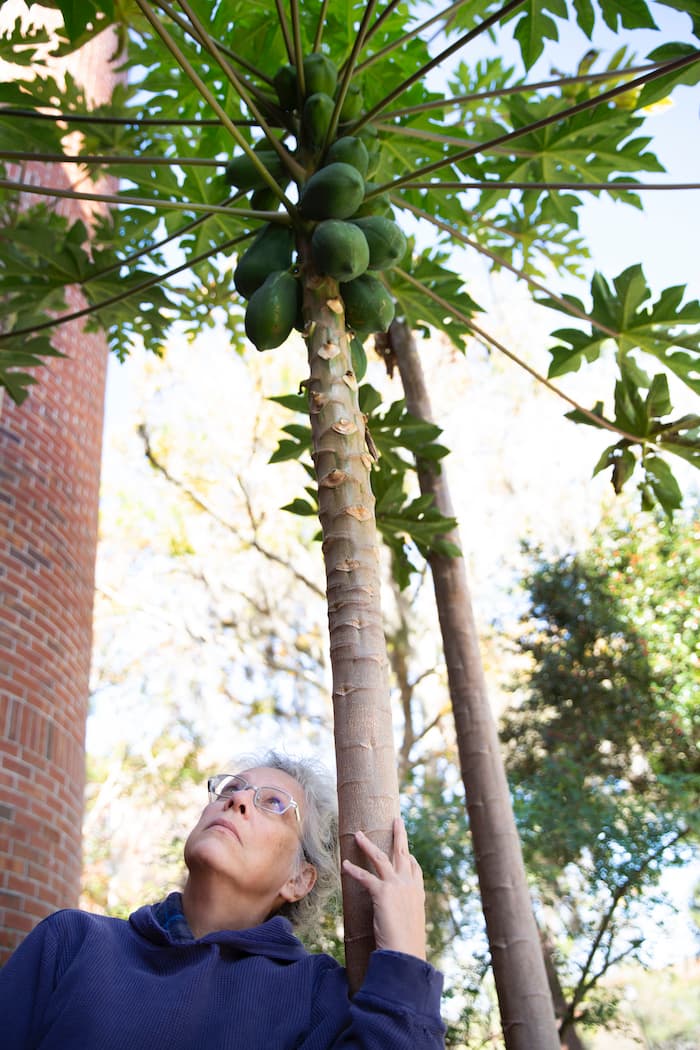
Photo: Annemarie Poyo Furlong/UF College of the Arts
Garden or art? It’s both.
When students snag a papaya from a cluster of slender trees on the eastern edge of the University of Florida campus, they’re eating art.
The artist doesn’t really mind, though. When people stop to notice professor Katerie Gladdys’ 8x8-foot installation, they’re experiencing a subtle commentary on the changes a warming climate could bring.
The 3-year-old pocket garden, protected from frost by sun-warmed brick buildings and a nearby HVAC exhaust vent, blooms with tropical and subtropical species that normally wouldn’t survive North Florida’s winters. Working with Field & Fork campus food systems coordinator Anna Prizzia, Gladdys planted the plot with wild lime, passionfruit vine, yucca and beach sunflower, funded by UF’s College of the Arts and Center for the Humanities and the Public Sphere. As these and other plants move into the area in years to come, species that thrive here now could be driven out, replaced by those that tolerate hotter, drier, even saltier conditions.
“With this garden, I wanted to ask, what would our landscape look like when it’s transformed by climate change and sea level rise?”
Gladdys is planning to add a sign describing the garden’s significance.
“It surprises me how much people care about the space. It’s part of their walk through campus,” she said. “After a hurricane or a freeze, people want to know if the papayas survived.”
The papaya trees popped up in the garden after Gladdys fertilized the plot with compost from her yard that contained papaya seeds. Now they tower overhead, laden with fruit. Hard freezes and even vandalism have damaged them, but they keep coming back.
“They are so resilient,” she said. “It makes me happy.”
As seas rise and temperatures warm, Floridians will likely need some of that same resilience.
"Plants and art can be a way to get people talking about these larger issues,” Gladdys said.
